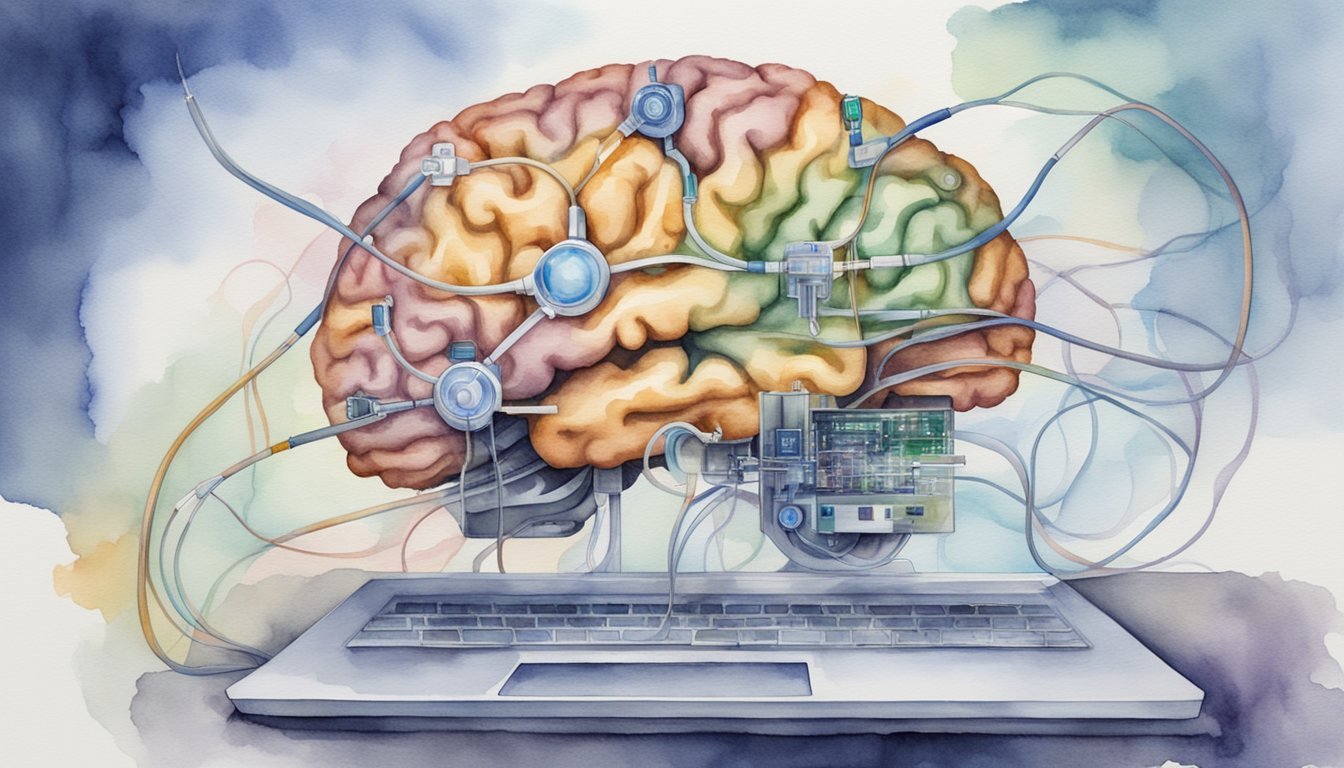Understanding Brain Linking
Brain linking is an emerging area of neuroscience that relates to how different parts of the brain coordinate and communicate. This section delves into the intricate details of neuron interactions, the latest neuroimaging technologies, and the role computational models play in the field of neuroscience.
Basics of Neuron Function and Connectivity
Neurons are the fundamental units of the brain and nervous system, responsible for transmitting information through electrical and chemical signals. Each neuron connects to other neurons through synapses, forming vast networks that underpin all aspects of human cognition, including learning, memory, attention, language, perception, and consciousness. Specifically, the cortex, a key area associated with higher brain functions, contains about 16 billion neurons interlinked in a complex web that enables the human cerebral cortex to process intricate information.
Advancements in Neuroimaging Technologies
Neuroimaging has revolutionized our understanding of brain function and structure. Techniques like functional magnetic resonance imaging (fMRI) and electroencephalography (EEG) allow scientists to visualize active brain regions and understand how different areas of the brain interact. Transcranial magnetic stimulation (TMS) has even enabled the direct manipulation of brain activity, offering insights into the connectivity of the cerebral cortex.
The Role of Computational Models in Neuroscience
Computational models are pivotal in decoding the complexity of brain networks. By simulating brain activity, scientists can test how changes in neuron connections affect overall behavior and cognition. These models have become invaluable for linking brain structure to function, further advancing our understanding of neural dynamics. Research integrating computational approaches helps clarify the interplay between different brain regions and is crucial to elucidating the neural basis of cognitive functions and behavior.
Applications of Brain Linking in Health and Technology

Brain linking technology is rapidly advancing, offering revolutionary possibilities in health and communication. This section delves into the specific applications and implications of this technology across various domains.
Brain-to-Brain Communication and Interfaces
Advancements in brain-to-brain communication have led to the development of interfaces that allow direct information exchange between individuals. Scientists have been exploring brainnet, a concept that potentially enables collaboration and shared experiences without the need for verbal or written language. Such interfaces tap into brain waves and convert them into digital signals that can be transmitted and received by others, forming a sort of telepathic network.
Implications for Mental Health and Disorders
The intersection of brain-linking technologies and mental health has opened new avenues for diagnosing and treating brain disorders. Researchers have found applications for brain-computer interfaces (BCIs) in relieving symptoms of anxiety, depression, and post-traumatic stress disorder. These interfaces can help form a cognitive map that provides deep insights into the emotional and functional brain networks, guiding the development of personalized therapies.
Future of Brain Linking in Society and Ethics
As brain linking technologies evolve, they raise important questions regarding ethics and the role of such technologies in society. Neuroscientists and ethicists are working together to ensure the integration of brain-linking technology supports mental and physical health without contributing to social isolation or privacy intrusions. Future applications may include enhancing cognitive abilities or treating severe brain diseases, but such advancements must be carefully evaluated to maintain the respect for individual rights and the essence of human experience.

